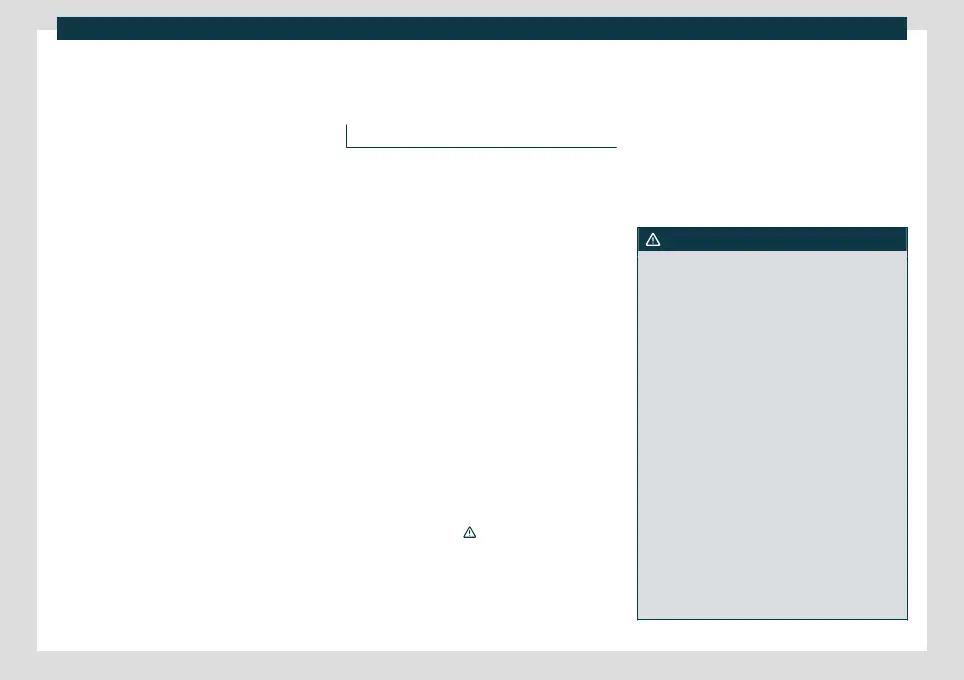High-voltage battery
Departure time settings
T
o set the desir
ed departure time, touch the
corresponding function button or check the
box .
●
Departure times: Time, day of the week or
set a single or weekly departure time.
●
Air conditioning: the vehicle interior is
heated or cooled at the departure
time
›››
page 158 .
●
Trough or night-time tariff: a preferred
period of time for charging can be set.
Activating the departure time
Activate the departure time by checking the
box in the departure times overview.
Displays
Charging activated at a departure time.
Air conditioning switched on at a depar-
ture time.
The departure time is used regularly.
Charging the high-voltage bat-
tery
Introduction
3 Valid for: hybrid vehicles
Check that the driving mode is de
activated
and that the charging cable and infrastruc-
ture are in perfect condition.
Charging modes
Your vehicle has the following possible
charging modes:
●
Fixed AC (alternating current) charging
station or W
allbox, also known as Mode 3
charging
›››
page 304 : The vehicle can be
charged at maximum power at these sta-
tions, e.g. at a public charging station or
home Wallbox.
●
Portable charging station or ICCB (In-Ca-
ble Control Box) cable, also known as Mode
2 charging or cable
›››
page 304 : The Mode
2 cable is included as standard and is con-
nected to a conventional household electri-
cal socket, meaning that the maximum pow-
er will be limited
›››
. You must plan for a
long
er char
ging time, e.g. overnight.
The home's electrical installation must be
verified and in perfect condition.
Direct current (DC) or Mode 4 charging is
not compatible with this vehicle.
Differential protection
The vehicle is fitted with a direct current
leakage (DC leakage) protection device. This
prevents any DC leaks that may occur during
charging from flowing into the home’s elec-
trical installation through the charging cable.
WARNING
Charging the battery improperly, failing to
observe generally applicable safety meas-
ures, using unsuitable or damaged electric-
ity sockets and charging cables, charging
from an unsuitable electrical installation or
incorrectly handling the high-voltage bat-
tery can cause short circuits, electrical dis-
charges, explosions, fires, burns, serious in-
jury and even death.
●
Always follow the steps in the order in
which they are shown to avoid the risk of an
electrical discharge and serious injury
caused by the residual energy present in
the charging accumulator. Never pull on
the mains connector during charging.
●
Only charge the vehicle from correctly in-
stalled power sockets that have been tes-
ted and are undamaged, and from electri-
cal installations in a perfect state of repair.
Get specialized personnel to periodically
inspect the power sockets and the electri-
cal installation.
»
303

